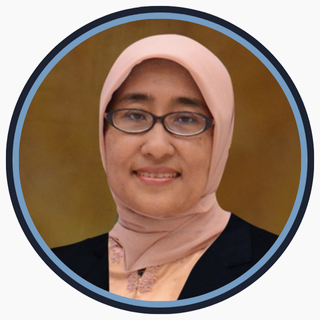The lack of counselling and passively case detection affecting the occurrance of grade 2 disability in Sampang
Downloads
Leprosy is a chronic disease that attacks the skin, peripheral nerves, to other body organs which can cause permanent disability. Sampang is an area with the highest average prevalence rate (PR) of leprosy cases in the period 2010-2014 which has a proportion of level II disability of 13%, while the standard set is no more than 5%. The purpose of this study was to analyze the effect of health services on the incidence of leprosy level II disability. This type of research is observational-analytic research with a case-control design. This research was conducted in 8 working areas of the Public health centers (PHC) in Sampang District. The sample was Multi Basiler (MB) type of leprosy which consisted of 33 people with level II disabilities as a case group and 33 people with leprosy who had level 0 or level I disabilities as a control group. Sampling is done using a simple random sampling technique. Data analysis was performed simultaneously with the logistic regression test. The results showed that the passive case finding method (OR = 7,334; 95% CI = 1,643–32,739), very late diagnosis time (OR = 15,267; 95% CI = 1,447–161,071), lack of Prevention of Disability (POD) (OR = 7,016; 95 % CI = 1,574–31,274) and lack of counseling (OR = 9,154; 95% CI = 1,786–46,906) influenced the incidence of level II leprosy disability. The conclusion of this study is that the case-finding method, diagnosis time, POD, and counseling affect the incidence of level II leprosy disability in patients. It is recommended to actively increase case finding and improve counseling activities.
Brakel, W.H. 2007. Disability and Leprosy: The Way Forward, Annals Academy of Medicine, Vol. 36, no. 1, January, pp. 86–87.
Cardona, N. and Castro. 2013. Leprosy in Colombia: Post Elimination Stage?, Lepr Rev, 84, September, pp. 238–274.
Dinas Kesehatan Provinsi Jawa Timur. 2013. Profil Kesehatan Provinsi Jawa Timur Tahun 2012.
Duerksen. 1993. Workshop 10: management of physical disability, International Journal of Leprosy, pp. 748–749.
Ferreira, J., Mengue, S., Wagner, M., and Duncan, B. 2000. Estimating hidden prevalence in hansen's disease through diagnosis and grade of disability at time of diagnosis, International Journal of Leprosy, vol. 68, no. 4, December, pp. 464–473.
Josep, G. dan Rao, S. 1999. Impact of leprosy on the quality of life, World Health Organization, vol. 7, no. 6, pp. 515–517.
Kamal, M. 2015. Pengaruh Pelayanan Kesehatan terhadap Kejadian Kecacatan Kusta Tingkat II di Kabupaten Sampang, Tesis, Universitas Airlangga Surabaya.
Kemenkes RI. 2012a. Pedoman Nasional Program Pengendalian Kusta, Jakarta: Kemenkes RI.
Kemenkes RI. 2012b. Profi l Kesehatan Indonesia Tahun 2011, Jakarta: Kemenkes RI.
Kumar, A., Girdhar, A. and Girdar B. K. 2012. Risk of developing disability in pre and post-multidrug therapy treatment among multibacilary leprosy: agra mb cohort study, BMJ Open, vol. 2.
Kurnianto, J. 2002. Faktor-faktor Risiko yang Berhubungan dengan Kecacatan Penderita Kusta di Kabupaten Tegal, Tesis, Universitas Diponegoro Semarang.
Lwanga, S. K. and Lemeshow, S. 1998. Sample Size Determination in Health Studies, a Practical Manual, Geneva: WHO.
Prawoto (2008) Faktor-faktor Risiko yang Berpengaruh Terhadap Terjadinya Reaksi Kusta (Studi di Wilayah Kerja Puskesmas Kabupaten Brebes), Tesis, Universitas Diponegoro Semarang.
Rachmalina dan Suzanti. (1999). Penanggulangan penyakit kusta pada daerah endemis dengan pendekatan sosial budaya di kabupaten bangkalan (suatu tinjauan kualitatif), Media Litbang Kesehatan, vol. 9, no. 3, hal. 24-28
Rambey, M.A. 2012. Hubungan Jenis Kelamin dengan Kejadian Cacat Tingkat 2 pada Penderita Kusta di Kabupaten Lamongan Tahun 2012, Tesis, Univeristas Indonesia.
Richardus, J.H. dan Habbema, J. Dik F. 2007. The Impact of Leprosy Control on the Transmission of M. Leprae: is Elimination Being Attained?, Leprosy Review, 78, September, pp. 330–337.
Richardus, J.H., Finlay, K.M., Croft, R.P., dan Smith, W.C. 1996. Nerve function impairment in leprosy at diagnosis and at completion of mdt: a retrospective cohort study of 786 patients in Bangladesh, Leprosy Review, 67, April, pp. 297–305.
Santos, V., Matos, A., Oliveira, L., Lemos, L., Gurgel, R., Reis, F., Santos, V., et al. 2015. Clinical variables associated with disability in leprosy cases in Northeast Brazil, The Journal of Infection in Developing Countries, vol. 9, no. 3, pp. 232–238.
Sehgal, A. 2006. Deadly diseases and epidemics: leprosy, Philadelphia: Chelsea House.
Sidharti. 2012. Pengembangan Indikator Prediktif Keteraturan Berobat pada Penderita Kusta dan Hubungan dengan Hasil Pemeriksaan Bakteriologi di Kabupaten Sampang, Tesis, Universitas Airlangga Surabaya.
Susanto, N. (2006).Faktor-faktor yang berhubungan dengan tingkat kecacatan penderita kusta (kajian di kabupaten sukoharjo), Tesis, Universitas Gadjah Madah.
Soedarjatmi, Istiarti, T., Widagdo L. 2009. Faktor-faktor yang Melatarbelakangi Persepsi Penderita terhadap Stigma Penyakit Kusta, Jurnal Promosi Kesehatan Indonesia, vol. 4, no. 1, pp. 18–24.
WHO. 2013. Global leprosy: Update on the 2012 Situation, Weekly Epidemiological Record (WER), vol. 88, no. 35, Agustus, pp. 365–380.
- Every manuscript submitted to must observe the policy and terms set by the Jurnal Berkala Epidemiologi
- Publication rights to manuscript content published by the Jurnal Berkala Epidemiologi is owned by the journal with the consent and approval of the author(s) concerned. (download copyright agreement)
- Complete texts of electronically published manuscripts can be accessed free of charge if used for educational and research purposes according to copyright regulations.

JBE by Universitas Airlangga is licensed under a Creative Commons Attribution-ShareAlike 4.0 International License.























